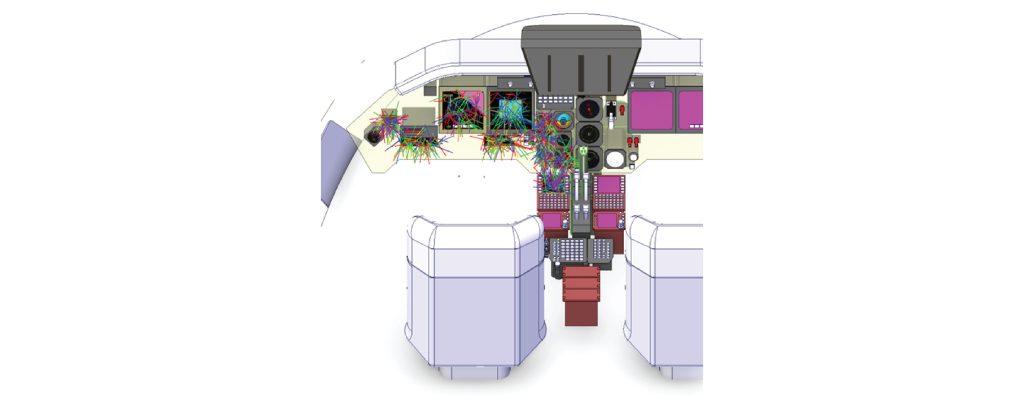
Ansys SPEOS helps engineers analyze and optimize vehicle lighting to minimize glare and improve visibility, ensuring safer driving experiences in various lighting conditions. Even pedestrians are familiar with how distracting glare from the sun, headlights of oncoming vehicles, or reflections from wet surfaces can be. For drivers, these optical distortions become even more challenging as they navigate the road safely. Beyond external lighting conditions, interior lighting can also be a concern if critical information on a vehicle’s indicator panels is not clearly visible.
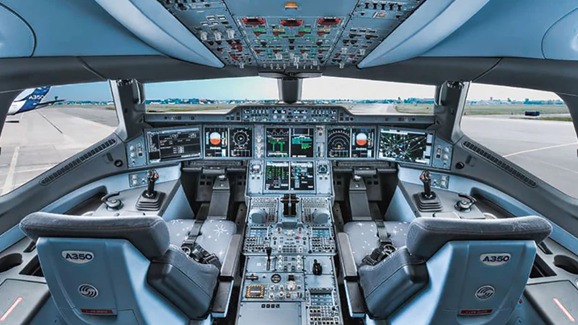
Cockpit Interior Lighting (Source: https://aeroreport.de/en/good-to-know/yesterday-today-cockpit)
Ansys SPEOS provides an advanced platform for optimizing cockpit lighting by simulating real-world lighting conditions, ensuring optimal visibility, and minimizing glare. It helps engineers assess illumination uniformity, contrast, and readability of displays in various environments. By optimizing light distribution and reducing visual discomfort, SPEOS enhances pilot safety, comfort, and regulatory compliance.
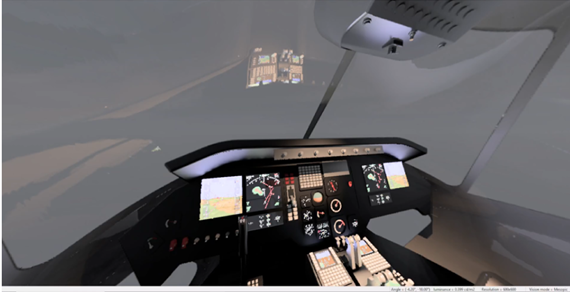
Simulation of cockpit interior from pilot vision lighting at daytime
Ansys SPEOS is a powerful tool for human vision analysis (visualization and glare studies) and straylight analysis (reflection studies). It allows engineers to accurately simulate cockpit lighting conditions, test for visual clarity, and optimize illumination to meet safety standards. These steps include:
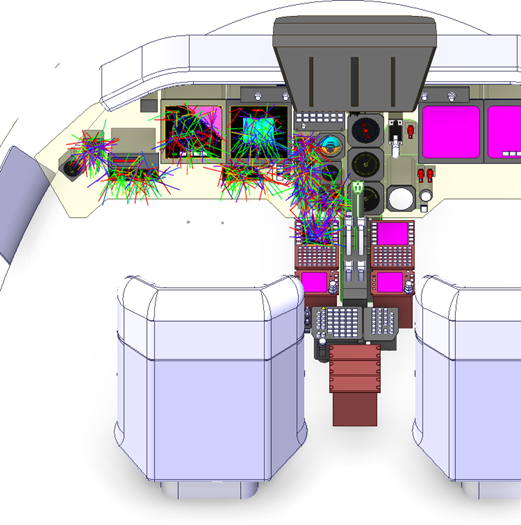
SPEOS Setup for cockpit interior lighting
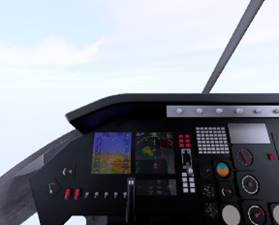
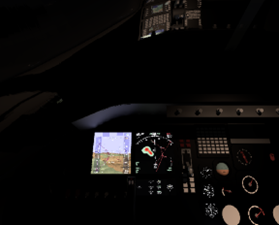
Left: Pilot vision in daytime; Right: Pilot vision in night-time
360deg view of cockpit interior from pilot’s vision
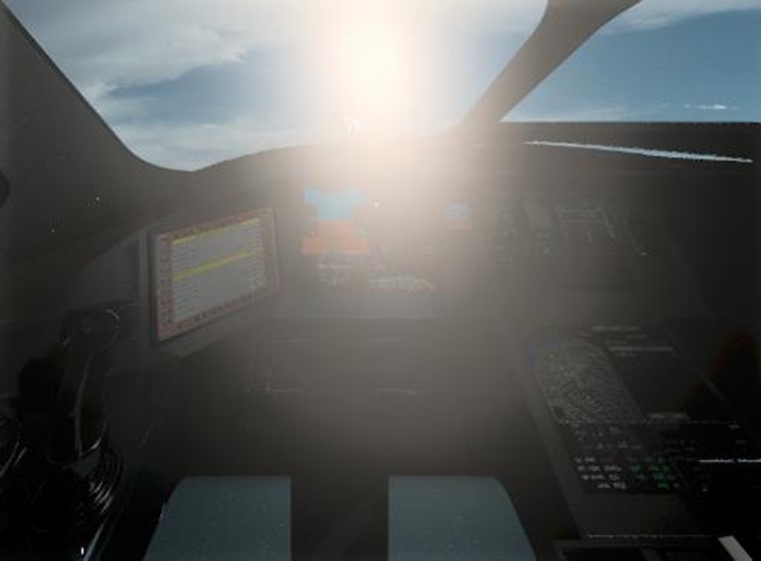
Sun directly pointed in the pilot’s vision
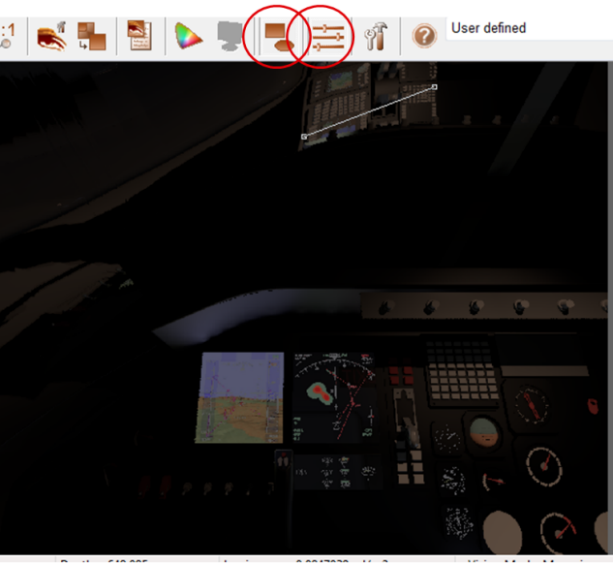
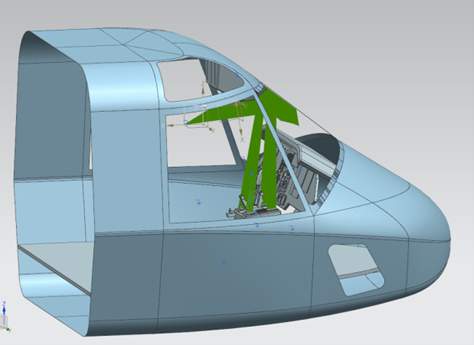
Left: Reflections observed on windshield; Right: Tracing the rays from display to pilot eye point which are causing the reflections.
Simulation results: reflections observed inside the cockpit for different sun positions
By using Ansys SPEOS, manufacturers gain several advantages in cockpit lighting design:
With the ability to simulate real-world lighting conditions, engineers can ensure compliance with aviation safety standards. SPEOS helps identify and mitigate risks associated with glare, reflections, and inadequate illumination.
Optimized cockpit lighting reduces eye strain, improves focus, and enhances the pilot’s ability to interpret critical flight data, leading to more efficient decision-making.
Traditional cockpit lighting design relies on multiple physical prototypes, which are costly and time-consuming. SPEOS enables virtual testing, eliminating the need for extensive prototyping and accelerating time-to-market.
As aviation moves towards sustainability, reducing energy consumption is critical. Ansys SPEOS helps optimize light distribution, ensuring minimal power usage without compromising visibility.
By integrating cockpit lighting simulations with broader aircraft system models, manufacturers can ensure seamless interaction between lighting, instrumentation, and overall cockpit ergonomics.
Ansys SPEOS provides a powerful solution for analysing and optimizing cockpit interior lighting, ensuring optimal visibility, safety, and compliance with aviation standards. By simulating real-world lighting conditions, SPEOS enables engineers to assess illumination uniformity, glare reduction, and display readability under various scenarios. It helps refine light distribution to enhance pilot comfort while preventing visual strain.
Additionally, its advanced simulations accelerate the design process, reducing the need for physical prototypes and streamlining certification. With Ansys SPEOS, manufacturers can create cockpit lighting systems that improve pilot efficiency, enhance situational awareness, and contribute to a safer and more sustainable aviation industry.